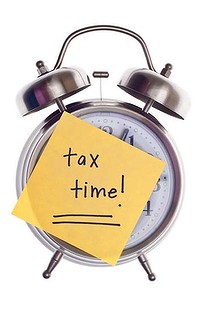
15 JANUARY 2014 
• Income tax return for taxable large/medium business taxpayers as per latest year lodged (all entities other than individuals) due date for lodging, unless required earlier.
• Payment for companies and super funds was due 1 December 2013. Payment for trusts in this category is due as per their notice of assessment.
21 JANUARY 2014
• December 2013 monthly activity statement except for small business clients who report GST monthly and lodge electronically using a registered agent.
28 JANUARY 2014
• Super guarantee contributions for Quarter 2 (October – December 2013) are to be made to the fund by this date. Employers who do not pay minimum super contributions for Quarter 2 by this date must pay the super guarantee charge and lodge a Superannuation guarantee charge statement - quarterly (NAT 9599) with the ATO by 28 February 2014. Remember, the super guarantee charge is not tax deductible.
21 FEBRUARY 2014
• December 2013 monthly activity statement - due date for lodgement and payment.
• January 2014 monthly activity statement - due date for lodgement and payment.
28 FEBRUARY 2014
• Quarter 2 activity statements (October - December 2013) - due date for lodgement and payment (all lodgement methods).
• Income tax return for non-taxable large/medium business taxpayers as per latest year lodged (all entities other than individuals) due date for lodging.
• Self-managed superannuation fund annual return for newly registered self-managed super funds (SMSF) is due on this date for lodgement and payment. You need to ensure you leave enough time for the audit report to be completed to enable lodgement of the SMSF annual return by the due date.
• Annual GST return or information report if taxpayer does not have a tax return lodgement obligation (if taxpayer has a tax return obligation, this return/report must be lodged by the lodgement due date of the tax return).
• Superannuation guarantee charge (SGC) statement - quarterly and paying the super guarantee charge for Quarter 2 (October – December 2013), if the employer did not pay enough contributions on time.
21 MARCH 2014
• February 2014 monthly activity statement – due date for lodgement and payment.
31 MARCH 2014
• Income tax return for companies and super funds with total income in excess of $2 million in the latest year lodged (excluding large/medium business taxpayers) – due date for lodging, unless due earlier. Payment for companies and super funds in this category is also due by this date.
HELPING TO COMPARE BUSINESS PERFORMANCE
Small business benchmarks are key financial ratios developed from information provided to the ATO by businesses on their income tax returns and activity statements. You can use the benchmarks to help you compare your business and record keeping performance against similar businesses in your industry.
The following types of benchmarks are published by the ATO for the small business sector:
Benchmarks are updated by the ATO on an annual basis with new financial year data. The purpose of the update is to ensure the benchmarks reflect the performance of businesses over time.

Benchmarks are published for businesses with different turnover ranges across more than 100 industries. They are generally published as a range, to recognise the variations that occur between businesses due to factors such as location and the businesses circumstances.
Businesses reporting outside the benchmarks may attract the attention of the ATO. There may be reasons for this difference, such as higher costs or lower selling prices than others in the industry, but it may also be an indication that a business is not recording and paying tax on all its transactions, especially cash transactions.
If you find you are outside the benchmarks for your industry, check that you have correctly recorded and reported income and deductions for your business. To do this you should review your record-keeping practices to ensure they meet the legal requirements.
If you are outside of the benchmark for your industry, this might indicate that you are not properly recording all your income, in particular your cash income. The ATO has established a clear link exists between poor record-keeping practices and not meeting tax obligations.
Excess contributions tax (ECT) is a tax you pay when your super contributions go over either your concessional (before tax) contributions cap for the 2012-2013 and prior financial years or the non-concessional (after tax) contributions cap.
The cap amount and the amount of tax you pay will depend on whether the contributions are concessional or non-concessional contributions. 
The ATO works out if you have excess contributions based on information they receive from your super fund and on your income tax return.
For the 2013-2014 financial year and onwards, excess super concessional contributions will no longer incur excess contributions tax (ECT) but will instead be included in your assessable income for the corresponding year and taxed at your marginal tax rate.
As part of the ATO assessment process you will receive a non-refundable tax offset of 15% of your excess concessional contributions along with an additional excess concessional contribution charge you will be liable for.
To assist payment of the additional tax and charge, individuals can request up to 85% of their excess concessional contributions to be released from their super fund. When released from the fund, it is not counted as non-concessional contributions.
For the 2011-2012 and 2012-2013 financial years only, individuals with excess concessional contributions of $10,000 or less may receive a once only offer to refund their excess concessional contributions. If refunded, the amount is still assessed at your marginal tax rate rather than pay excess contributions tax (ECT).
For the 2012-2013 and prior financial years, if the ATO calculates that you've gone over your cap and have excess contributions, they will contact you in writing.
CHANGES TO SUPER CAPS
The concessional super contributions cap has increased to $35,000 for:
The general concessional cap for everyone else remains at $25,000 in 2013-2014.
The higher cap of $35,000 replaces the previously announced cap that was to apply from 1 July 2014 for individuals aged 50 years and over with superannuation balances below $500,000.
ATO STOPPING RETURNS FOR REVIEW
As part of the 2012–2013 Budget, the government announced the consolidation of eight dependency tax offsets into a single, streamlined and non-refundable tax offset from 1 July 2012.
The tax offsets to be consolidated are: 
New legislation changing entitlements to the dependent (invalid and carer) tax offset came into effect from 1 July 2012.
Unless you are eligible for a zone or overseas tax offset, you are no longer able to claim offsets for a:
You can only claim a tax offset for dependents in receipt of a government payment for an invalidity pension or carer of such a person.
The ATO expects that very few taxpayers would be eligible to receive the new tax offset; however 32,512 taxpayers have made claims.
As a result, the ATO is stopping all income tax returns with a dependent tax offset claim greater than $0 to review and will follow-up on any notices of assessment that have already issued.
ATO DATA-MATCHING - DEPENDENT (INVALID AND CARER) TAX OFFSET
The ATO has announced a new data-matching program whereby it will request and collect names, addresses and other personal details of individuals receiving Carer Allowance or Carer Allowance Healthcare Card Only from the Department of Human Services – Centrelink program. It said the data will be electronically matched with certain sections of ATO data holdings to identify entitlements to claim a Dependent (invalid and carer) tax offset under taxation laws.
Records relating to approximately 600,000 individuals for each of the financial years 2011-2012, 2012-2013 and 2013‑2014 receiving the Carer Allowance or Carer Allowance Healthcare Card Only will be matched. 
This program is called the Carer Allowance Data Matching Program and it enables the ATO to:
Gazette - C2013G01594
Receive FREE information and advice on Accounting & Taxation every Quarter
Signup